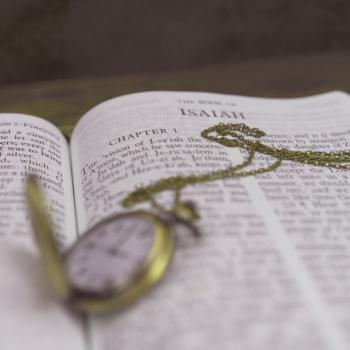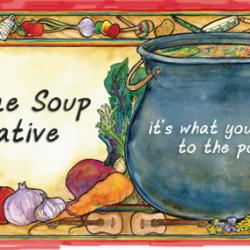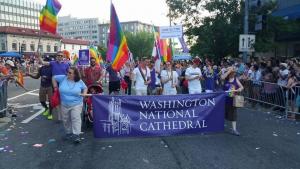As progressive Christians we may be considering relocating to poor communities and practicing New Monasticism. As Faithful Democrats we have to remember to examine our social/political choices in light of historical social movements that have come before us.
The settlement house movement is the foundation of public welfare in the United States. Beginning in the early 19th century within the immigrant enclaves of New York City and Chicago, this movement was led predominately by white middle class Christians who relocated to these communities to live together, serve, and evangelize the poor. During this period the immigrant enclaves of America’s major cities were the abandoned places of the empire. The settlement house movement was the foundation for the field of social work and quite possibly the earliest form of "inner-city ministry." Out of this work of relocation and social service came the "settlement house," which was an institution that provided for the social, physical, and spiritual needs of the immigrant poor. The "settlement house movement" became very popular during this era, and some of these institutions have endured until today. I spent many summers working for Hamilton Madison House, one of New York City’s oldest and largest settlement houses. My work at this institution gave me the opportunity to serve immigrant populations who were facing the same issues of poverty that my inner-city African-American community faced.
Though the settlement house movement provided a great deal of desperately needed services to underserved populations and laid the foundation for the social work field, there are still many internal critiques of this movement. Settlement house workers were not sensitive to the cultures of those they served. Rather, these workers sought to convert immigrants to a Victorian way of life. The settlement house movement did not seek to build leaders from among the immigrant poor they served, which prevented the communities from becoming self-sustaining. Most importantly, the settlement house workers did not seek to tackle the structural causes of poverty.
As a dual social work and divinity student at Columbia University and Union Theological Seminary, I am studying both the settlement house movement and various examples of Christian social justice. From my studies I see important similarities between the settlement house movement of the past and the New Monastic movement of today. I think that by examining the settlement house movement, New Monasticism can avoid repeating the mistakes of the past.
In spite of the obvious similarities between these two movements, I do recognize the ways in which New Monasticism is different from the settlement house movement. New Monasticism practices more cultural sensitivity than the settlement house movement, has a much needed critique of the empire, and does not seek to convert the poor to the "American" way of life. Additionally, activism is at the heart of most New Monastic communities, which was not the case within the settlement house movement. I applaud New Monasticism for these strengths, but I still think that there is a danger of repeating the mistakes of the settlement house movement.
The current dialogue about issues of diversity, indigenous leadership, and class within the New Monastic movement, though uncomfortable, is needed. The Holy Spirit nudges us from time to time, giving us the opportunity to pause and evaluate our lives, our ministries, and our movements; might this dialogue be one of those times? I know in my personal faith journey my first inclination is to avoid the times of discomfort, but Christ has continually used these times to develop my character and teach me his ways.
Out of a general respect for anyone who seeks to serve the inner city (I grew up in the housing projects of Brooklyn’s equivalent to Kensington), and with an excitement for the church’s renewed dedication to preaching "the good news to the poor," I humbly give a few suggestions for how New Monasticism can avoid repeating the past mistakes of the Settlement House movement.
1. Seek creative ways to recruit people of color and poor people to the work of this movement. For example, if your community lacks racial diversity, consider going to historically African-American theological institutions such as Palmer Theological Seminary to invite students to join your work at a career fair, or speak about your work during a chapel service. Speaking at career fairs and chapel services may not seem like an exciting way to subvert the empire, but when Jesus was looking for people to join his movement, he did not wait for them to come to him. Jesus went where the disciples were, inviting them to join him in building the Kingdom. Additional places to find Christian minorities who are dedicated to social justice are: The Hispanic Theological Institute, The Hispanic Summer Program, The Campus Crusade for Christ Impact Conference, or the Asian American Christian Fellowship.
2. Make sure a vital part of community life is reading books on racism, class, and sexism, even if these works are not purely theological in nature. Peggy McIntosh’s article, "White Privilege: Unpacking the Invisible Knapsack," is a great place to start and the foundation for many anti-racism training classes and workshops.
3. Do not racialize poverty! In many ways we promote dangerous stereotypes about the nature of poverty by not discussing the diversity of the poor. By focusing on inner-city poverty with no discussion of white poverty or the working-class poor, we simplify the issue and prevent a wider movement to end poverty from developing. New Monastic communities can do just as much good in Appalachia as in the inner city. As my friend Sharaya Tindal so eloquently put it in a previous post, "go where you are called (by God), not where you are drawn."
4. In the words of Jane Addams: Don‘t forget the women! Much of the literature and preaching coming from the New Monastic movement is dominated by men. Though I am aware that women have been an important part of this movement, from its inception they still are not a major part of translating the message of New Monasticism to the church. We need more women speaking and writing about this movement. Women disproportionately suffer from poverty when compared to men, giving great value to the insights women can bring to this movement.
I offer these suggestions as someone who has visited both New Monastic communities (being warmly welcomed to visit the Rutba House in the summer of 2007), and homeless shelters (as a resident). The dual realities I live in have allowed me to develop a unique perspective. I pray that as the Holy Spirit continues to nudge all of us (especially myself), we will examine the church’s legacy of reform and activism to avoid repeating the mistakes of the past. Finally, let us keep the liberating love of Christ at the center of all we do.
Onleilove Alston is a former Beatitudes Fellow at Sojourners and a current student at Union Theological Seminary and Columbia University School of Social Work. She serves on the Servant Leadership Team of New York Faith & Justice and organizes with The Poverty Initiative.











